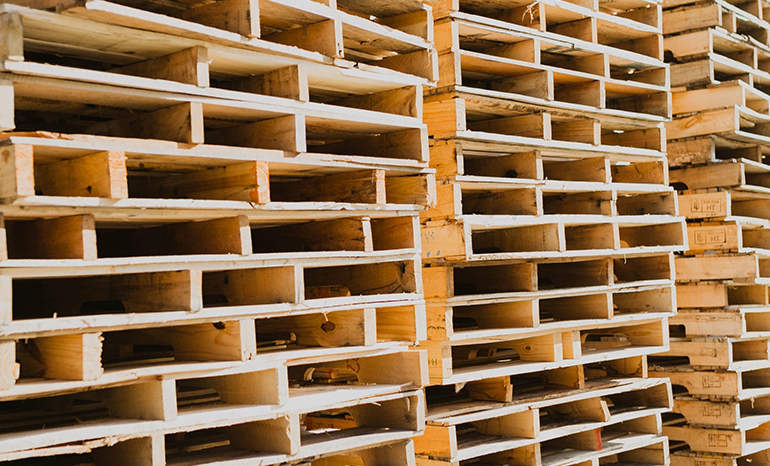
Most pallets in use today are made of wood (about 95 percent). The remainder are plastic, wood composite, or cardboard. So, why is there such a big gap? Well, let's get into it….
The first fundamental reason why wood pallets are preferable to plastic or any other material is that wood pallets are less expensive, and they have a heavier carrying capacity usually ranging from 1,500 to 3,000 pounds. Plastic pallets are relatively costly, but their dynamic load capacity is higher than that of wood at 5,000 pounds.
Wood pallets have become an attractive alternative for corporations interested in adding sustainability initiatives while reducing carbon footprint. For one, a broken wooden pallet can be readily repaired or recycled. And when a wood pallet has served its purpose, it can even be upcycled into something else. As compared to plastic pallets, recycling is possible; however, the complexity and cost also increase. And, if sent to a landfill instead of being recycled, the plastic takes a century to break down.
The point of recycling and reuse is secondary to the fact that wood pallets absorb carbon and keep it out of the air. Or, at least, they do less to add carbon to the air. Using wood pallets basically reduces an organization's carbon footprint. Check out this tool to calculate your impact.
Wooden pallets are also used by those companies that transport one-way or internationally shipping (Note: international shipped pallets requiring treatment on wooden pallets). Plastic pallets can ship internationally too; they do not require any pallet treatment as the material does not absorb moisture and bring on bugs. However, because of its cost factor, companies like to use plastic pallets in a closed warehouse system whereby tracking and reusing the pallet system is easy. If you are unsure which pallet is right for you, consider our post on pallet selection or contact our pallet pros. Wood or plastic pallet demand still exceeds supply in many cases, so lead times for most varieties will be longer. Be sure to provide your supplier with plenty of advance notice and be open to discussing alternative options.